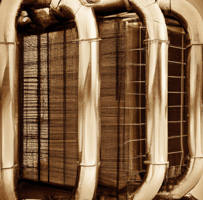The Gotland Runt, officially known as the Gotland Runt Offshore Race, is one of the most...
How to avoid business trips
For the last years we’ve been working a lot remotely. Working with some customers, this is a very smooth and effective process. With others, it’s a little bit more complicated. Why is this?
It surprises me that companies still spend so much money (and CO2) on a business trip, but skips the basics when it comes to supporting digital meetings. With very little effort you can accomplish a lot and improve the projects dramatically.
Nowadays we run all our projects digitally and this post summarizes things we’ve learned over the years to make the digital meeting so much better. I focus mainly on the technical side of a digital meeting, someday I might write a post on the digital meeting methodology in another blog post.
For free
If you’re on a budget, these are my tips:
- Find a good, quiet place to work.
- Turn your camera on, check out the lights and avoid backlight.
- Focus on the meeting, don’t do other things in parallel.
This might seem obvious, but I can tell you it isn’t.
The sound
The most important thing is the sound. The most annoying thing - sitting on the other end - is when you cannot hear the other participants.
Most headphones have a bad microphone, and the microphone placement can also be an issue. When the microphone is too close it often causes plosive sounds. It’s typically for words containing P, B, T, D, K and G. If you can avoid these letters you’ll be fine.
The easiest way to fix the sound is to use the build-in microphone in your laptop. The build-in microphone is normally an array microphone, designed to pick up sound in front of the screen. This normally gives a much better and much richer sound than most headsets we hear.
So, if you want you can continue using your headphones, but do a sound check and try the build-in microphone instead.
The light
The best way to look good on camera is to add light. I use two gigantic soft boxes, but a simple ring light works very well.
Place the lights 45 degrees above and 45 degrees to the left and right to avoid reflections and disturbance.
The camera
The first thing you can do with the camera is to find a good placement. Try to place the camera so that it’s positioned at the height of your eyes. Also position the camera so that you have a nice or neutral background, if possible.
The sound, improved
Once we have proper lights and a good camera, we can improve the sound even more. In my office I have a Shure SM7B on an adjustable boom connected to a pre-amp and a professional sound card. This sounds really good.
Another alternative would be to buy a similar microphone, the Shure MV7. It’s targeted to content producers and is connected directly via USB. I would still recommend an adjustable boom.
The camera, improved
The big problem with web-cameras is that there is no way to control the white balance. This means that skin-tone will be totally off and it makes you look terrible.
I use my digital Canon camera and the utility software by Canon. This give me a very crips image and I can also make sure that the white balance is set to the same color temperature as my soft boxes.
The camera lens I use has a fixed lens with an aperture of 2.8. This gives a narrow depth of field and nicely blurs the background.
The light, improved
In addition to the soft boxes, I also have some colored lights to light up the background. The background is just a simple curtain that covers the rest of the room. This screens out the rest of the room and also provides less resonance in the room, also making the sound better.
In addition to this I’ve also added a third light, a rim light. This is placed behind me and exposes the outline (or rim) with light. This lighting highlights the contours of a subject and creates a nice effect.
The sound, improved even more
Above I mentioned the curtains that screen the room and improves the sound. If you want to take this even further, you can add some sound treatment to the room. This basically kills resonance and makes the sound even better.
In addition to this I’ve also added two studio monitors. This doesn’t fix bad sound on the other side, but it gives me a possibility to raise the volume and hear the incoming sound without being forced to use headphones.
Conclusion
To summarize – make sure that everyone can hear you. If you have a descent laptop you probably have an array microphone. In a quiet environment this will be as good as any less than €200 microphone.
Secondly, make sure to turn the camera on and ensure decent light. You can find natural light or spend less than €100 on a ring light or soft box. This makes a huge difference and gives you a competitive edge in any meeting.
Third and last – place the camera in a good position and if possible – get a camera with a decent lens and the possibility to adjust the white balance.




